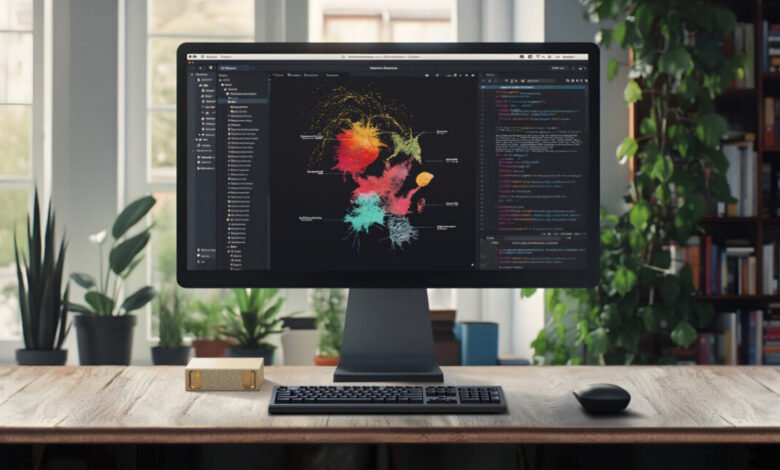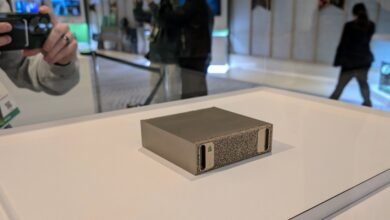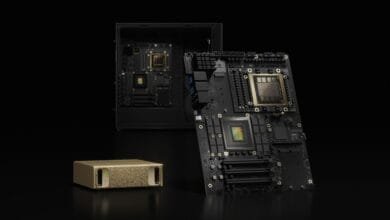Nvidia’s Tiny PC Packs Desktop AI Power

▼ Summary
– Nvidia announced the DGX Spark, a $4,000 desktop AI computer with one petaflop of performance and 128GB of unified memory in a compact form factor.
– Orders for the DGX Spark will begin on Wednesday, October 15 through Nvidia’s website, manufacturing partners, and select US retail stores.
– The device is designed as a desktop workstation for AI development to address limitations of standard PCs, allowing developers to run larger AI models locally instead of relying on cloud services.
– The DGX Spark can run AI models with up to 200 billion parameters and fine-tune models with up to 70 billion parameters, supporting tasks like image generation and chatbot creation.
– The compact 2.65-lb system uses Nvidia’s GB10 Grace Blackwell Superchip, includes high-speed networking, and features 128GB of unified memory shared between system and GPU tasks.
Nvidia is now accepting orders for the DGX Spark, a compact desktop AI workstation priced at $4,000 that delivers one petaflop of computing power and 128GB of unified memory. Designed to fit easily on any desk, this system aims to empower developers by letting them run substantial AI models locally without relying on cloud services or data centers.
Starting Wednesday, October 15, customers can place orders directly through Nvidia’s website. The DGX Spark will also be available from manufacturing partners and a number of retail stores across the United States.
Originally introduced as “Project DIGITS” back in January and officially named in May, the DGX Spark marks Nvidia’s push into a new class of desktop computers tailored specifically for artificial intelligence development. It addresses a common hurdle for AI developers: standard PCs and workstations often lack the memory and software capabilities needed for demanding AI workloads. This limitation frequently forces developers to migrate their projects to the cloud, but the DGX Spark offers a powerful local alternative.
Still, the market for a dedicated desktop AI workstation remains unclear, especially when considering the upfront investment compared to pay-as-you-go cloud solutions. The DGX Spark’s generous memory allocation enables it to handle unusually large AI models on-site, supporting models with up to 200 billion parameters and fine-tuning tasks involving up to 70 billion parameters. This opens the door to running advanced open-weights language models and media synthesis tools, such as AI image generators, directly from a desktop.
Users can take advantage of several pre-optimized applications on the DGX Spark. For example, they can fine-tune Black Forest Labs’ Flux.1 models for generating images, develop vision search and summarization agents using NVIDIA’s Cosmos Reason vision language model, or build responsive chatbots with the Qwen3 model, which has been specifically optimized for this platform.
Nvidia has managed to pack impressive hardware into a small 2.65-pound enclosure measuring just 5.91 by 5.91 by 1.99 inches, with a power consumption of 240 watts. The system is built around Nvidia’s GB10 Grace Blackwell Superchip and includes ConnectX-7 networking supporting 200 Gb/s speeds. It also utilizes NVLink-C2C interconnect technology, delivering five times the bandwidth of PCIe Gen 5. Central to its performance is the 128GB of unified memory, which is shared seamlessly between system operations and GPU tasks.
(Source: Ars Technica)

